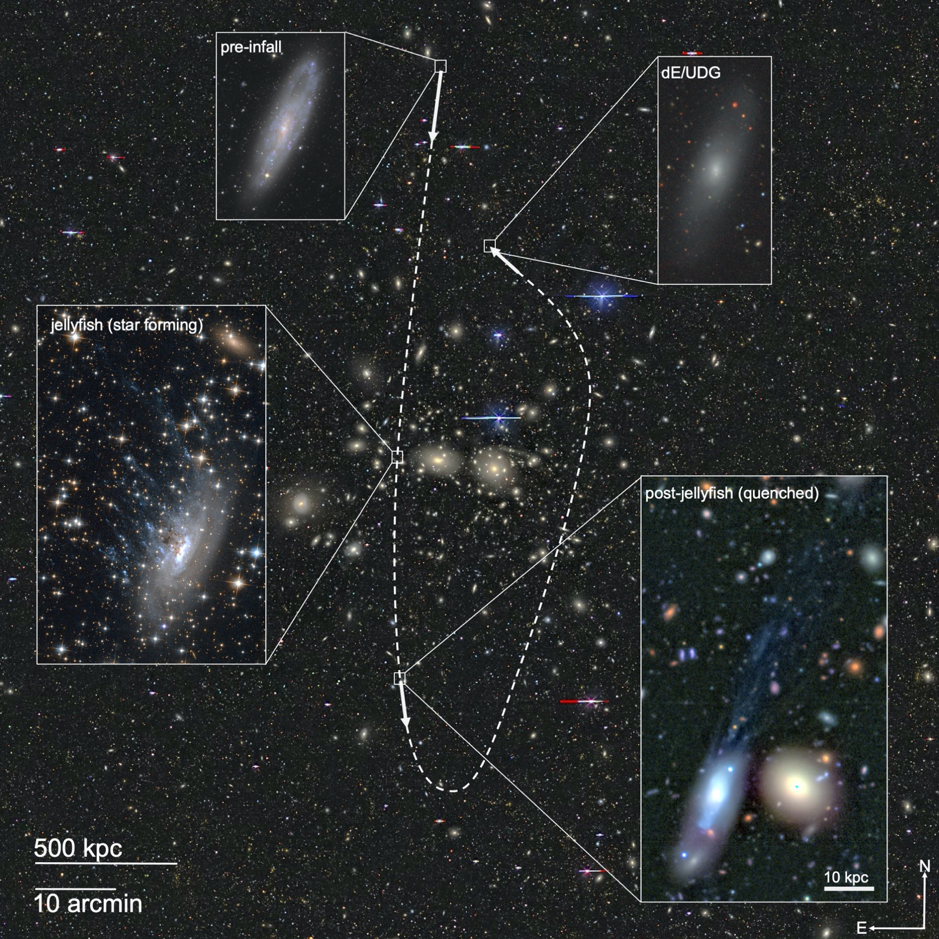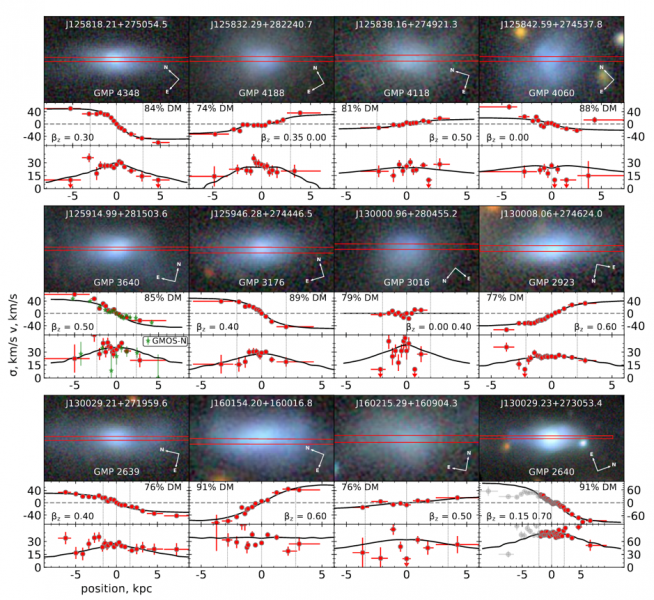
Two PhD students at APC laboratory in collaboration with colleagues at the Center for Astrophysics at Harvard and Smithsonian, the Lomonosov Moscow State University, the New York University Abu Dhabi and the National Astronomical Observatory of Japan have found out how ultra diffuse galaxies can be formed. It is known that the plasma inside galaxy clusters heated to millions of degrees is capable of stripping gas almost completely from the objects that have just entered the cluster. As a result, these new galaxies can lose significant mass and "puff up" growing in size and becoming ultra diffuse (UDG). The results of this work are published in a Nature Astronomy refereed paper (https://arxiv.org/pdf/2111.01140.pdf).
The authors analyzed the spectra of 11 young low-mass galaxies in the Coma and Abel 2147 clusters, located 323 and 486 million light years from Earth, respectively. On average the stars in these objects are ten to fifteen times younger than in the Milky Way, and their total mass is only around one percent of its mass.
The results show spectacular tails of gas and newly formed stars in the studied objects. These tails are considered to be signs of ram pressure stripping. Clusters containing hundreds and thousands of galaxies are filled with dark matter and intergalactic gas. The latter is effectively a very hot plasma with a temperature of tens of millions of degrees Celsius. The galaxies moving in the cluster hit hot plasma, which literally "blows out" their own gas - this leads to a stop of star formation in these stellar systems. At the same time, up to 60% of the stellar mass of the studied galaxies was formed 180-970 million years ago as a result of a burst of star formation. Presumably, it was triggered by the effect of the same heated plasma, when it created additional pressure on the interstellar medium in galaxies.
“Ultra diffuse galaxies may be comparable to the Milky Way in size and dynamical mass due to the large amount of dark matter, but we can hardly observe them even using the largest telescopes. It is believed that at the early stages of their formation, they lose significant amounts of gas from which new stars could be formed. So far, the specific mechanism underlying the formation of ultra diffuse galaxies remains a mystery. Apparently, 9 of the 11 galaxies we have studied, which are currently disk galaxies, will become ultra diffuse in the next 10 billion years. And we also assume that the described mechanism is valid for almost half of the known ultra diffuse galaxies in the Coma cluster. ” says the first author of the article, Kirill Grishin, 1-st year PhD Student at APC laboratory supervised by Simona Mei.
“Nowadays, not all types of galaxies have a generally accepted theory of evolution, and we do not always understand how certain objects could have formed. In this paper, we proposed a rather curious formation scenario of ultra diffuse galaxies: in fact, it assumes that you can "drop" a representative of the most common types of galaxies - a small spiral - on a galaxy cluster and due to a interaction with intergalactic gas, it will "puff up". Such a concept can seriously change the view of the entire cosmological community on the evolution of seemingly common objects in clusters, and it is quite simple to explain the formation of the ultra diffuse galaxies, which are still considered "exotic"," - summarizes one of the authors of the article, Anton Afanasiev, 3-rd year PhD Student at APC laboratory also supervised by Simona Mei.


Services/Groupes:
- Cosmologie
Objet de la publication:
Publications
